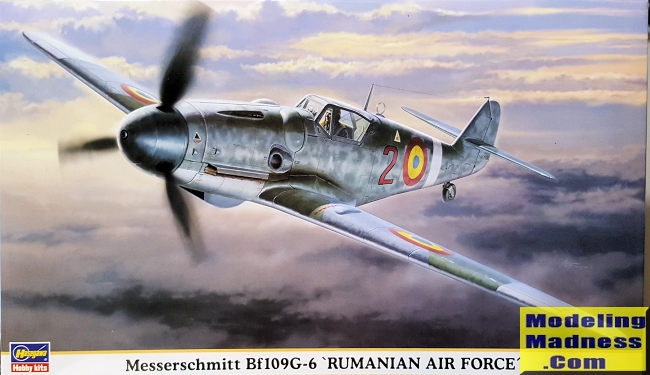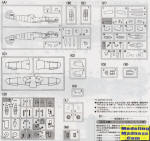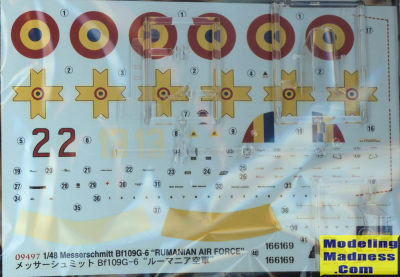
| KIT #: | 09497 |
| PRICE: | 2400 yen |
| DECALS: | Two options |
| REVIEWER: | Scott Van Aken |
| NOTES: | 2006 Limited Edition |

| HISTORY |
The G series, or Gustav, was introduced in mid-1942. Its initial variants (G-1 through G-4) differed only in minor details from the Bf 109F, most notably in the more powerful 1,475 PS (1,085 kW; 1,455 hp) DB 605 engine. Odd-numbered variants were built as high-altitude fighters with a pressurized cockpit and GM-1 boost, while even-numbered variants were un-pressurized, air superiority fighters and fighter-bombers. Long-range photo-reconnaissance variants also existed. The later G series (G-5 through G-14) was produced in a multitude of variants, with uprated armament and provision for kits of packaged, generally factory-installed parts known as Umrüst-Bausätze (usually contracted to Umbau) and adding a "/U" suffix to the aircraft designation when installed. Field kits known as Rüstsätze were also available for the G-series but those did not change the aircraft title. By early 1944, tactical requirements resulted in the addition of MW-50 water injection boost and high-performance superchargers, boosting engine output to 1,800–2,000 PS (1,324–1,471 kW; 1,775–1,973 hp). From early 1944, some G-2s, G-3s, G-4s and G-6s were converted to two-seat trainers, known as G-12s. An instructor's cockpit was added behind the original cockpit and both were covered by an elongated, glazed canopy.
| THE KIT |
 This is Hasegawa's standard Bf-109G-6 with a few additions to provide a
correct variation for the decals provided. Hasegawa's kit is basically their
109F with bits to add onto it to make it a G model. This means filling some
detail, scribing some other, trimming some areas, and opening some holes.
None of this is difficult and the instructions are quite explicit on what
needs to be done.
This is Hasegawa's standard Bf-109G-6 with a few additions to provide a
correct variation for the decals provided. Hasegawa's kit is basically their
109F with bits to add onto it to make it a G model. This means filling some
detail, scribing some other, trimming some areas, and opening some holes.
None of this is difficult and the instructions are quite explicit on what
needs to be done.
 The prop has separate blades and is glued in place as this is pre-polycap.
Hasegawa also lets you install the exhaust after the kit is painted if that
is what you want to do. You can install the wing mounted cannon gondolas if
you wish. The kit provides separate flaps and radiator exhaust. The
elevators can fairly easily be cut free if you wish to do that. Finally, two
different canopies are provided with one being standard and the other being
the Erla version.
The prop has separate blades and is glued in place as this is pre-polycap.
Hasegawa also lets you install the exhaust after the kit is painted if that
is what you want to do. You can install the wing mounted cannon gondolas if
you wish. The kit provides separate flaps and radiator exhaust. The
elevators can fairly easily be cut free if you wish to do that. Finally, two
different canopies are provided with one being standard and the other being
the Erla version. | CONCLUSIONS |
While the Hasegawa kit is now not the top option for some modelers (having been usurped by the newer Eduard and the Tamiya offerings), it is still a solid build that is not as fussy as the Eduard kit. Many of us have built a fair number of Hasegawa kits and have enjoyed the experience.
| REFERENCE |
https://en.wikipedia.org/wiki/Messerschmitt_Bf_109#Variants
July 2023
Copyright ModelingMadness.com. All rights reserved. No reproduction in part or in whole without express permission from the editor.
If you would like your product reviewed fairly and fairly quickly, please contact the editor or see other details in the Note to Contributors.